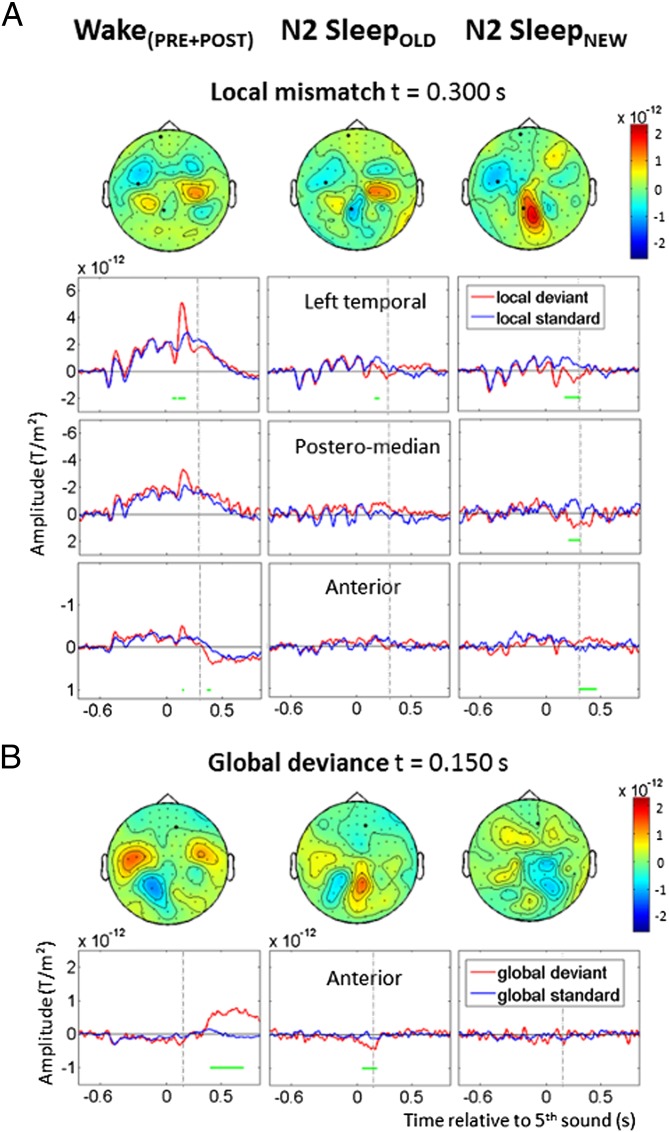Fig. 3.
Effects of previous exposure to sound sequences on the responses to local and global novelty. Each column presents the data from a specific state of vigilance and stimulus set: Wake(PRE+POST) (Left), N2-SleepOLD (Center), and N2-SleepNEW (Right). (A) Local mismatch effect over left temporal, posteromedian, and anterior MEG sensors. Cluster-based significant effects (P < 0.05) are represented by green lines. Topographies are shown at 300 ms, when activations between SleepOLD and SleepNEW differ significantly. In Wake(PRE+POST), the early and intermediate effects are visible in the left temporal region (P < 0.01), whereas the late effect reaches significance only in more anterior areas. In SleepOLD, the significant mismatch effect is limited to a transient late effect over temporal regions (P < 0.05). In SleepNEW, when new vowels are introduced during sleep, the late novelty response is enhanced and spreads over posteromedian (P < 0.01) and anterior areas (P < 0.01). (B) Global effect over anterior MEG sensors. Topographies are shown at 150 ms, when activations between SleepOLD and SleepNEW differ significantly. In Wake(PRE+POST), the effect over anterior sensors is large and sustained after 400 ms (P < 0.01). In SleepOLD, with sequences heard previously during wakefulness, an early transient effect is seen (P < 0.01). No global effect is seen for SleepNEW.

